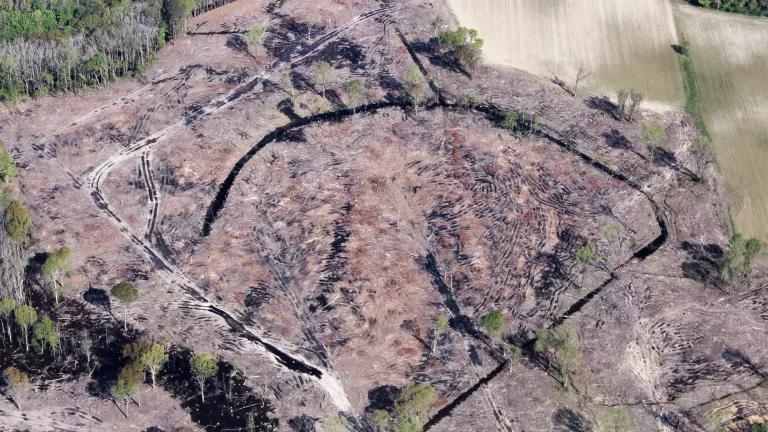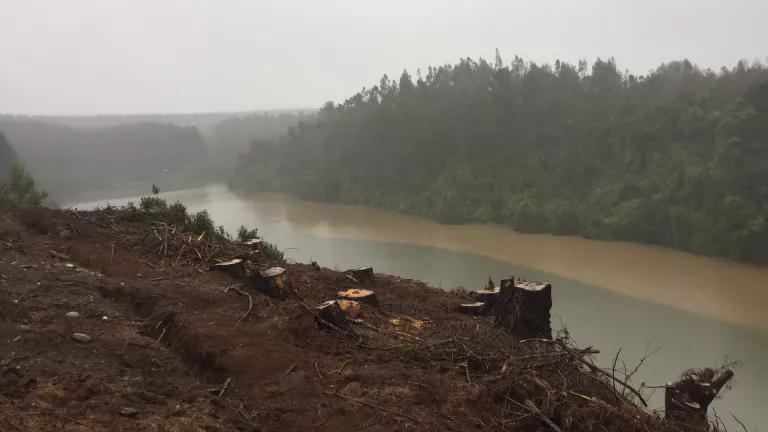Later this year, Parties to the UN Convention on Biodiversity will be called upon to adopt a plan to reverse the depletion of our world’s biodiversity and safeguard our children’s future.
The question is: will the plan compel transformative change?
That’s what it will take to ensure wild places and wildlife can expand and thrive, fulfill their critical contributions to ecosystems and human wellbeing, and help reduce the impact of climate change.
Scientists tell us that to give the ocean a fighting chance in the face of devastating impacts of climate change we need strong protection of at least 30% of our global oceans and lands from damaging human activity.
The UN’s draft framework does not go far enough. While the draft proposes conserving 30 percent of land and sea areas, it only proposes to put 10 percent under strict protection. These differences matter. Many countries "conserve" areas, while still allowing logging, mining, hunting, fishing, etc. That kind of conservation is insufficient. We need to strongly protect 30 percent of nature, severely limiting the kinds of activities allowed depending on the habitat. In some areas that may mean almost no human activities, in others it may allow for some minimal use. We already know that only requiring strict protections for a minimal amount of ocean and land is not working. Many countries have already achieved close to 10 percent strong protections for land, but are still suffering extreme biodiversity declines. We must do more if we are going to break with the failed systems of the past and deliver the kind of change necessary to save nature and ourselves.
In 2010, the CBD adopted targets for protecting and enhancing the natural world—known as the Aichi Biodiversity Targets. Those are set to expire this year and have been largely unmet. Last May, the United Nations starkly highlighted the lack of progress in conserving biodiversity and ecosystems. Its Global Assessment Report on Biodiversity and Ecosystem Services chronicled the disappearance of species we care about and rely on (a million species threatened with extinction, many within decades); declines in agricultural yields due to severely damaged soil; and eradication of forest ecosystems and the carbon storage benefits they bring.
The report made clear that our international frameworks for protecting nature are not working and are not enough. The impact of increasing land-use change, exploitation of organisms, and climate change are contributing to negative trends in nature and its contributions to people, and these are projected to continue to 2050 and beyond unless there is transformative change. By transformative change, scientists mean “a fundamental, system-wide reorganization across technological, economic and social factors, including paradigms, goals and values.”
In short, the stakes couldn’t be higher and the changes necessary couldn’t be more dramatic, especially considering the role conserving and promoting nature will play in tackling the climate crisis. Land-based natural climate solutions have the potential to provide 37 percent of the cost-effective climate change mitigation needed until 2030 to meet the goal of the Paris Agreement. One of the most practical ways countries can simultaneously address the twin climate and biodiversity crisis is to protect large areas of carbon and biodiversity-rich land from over-use and exploitation. And in the ocean, fully and highly protecting 30% of the global ocean can help maximize the resilience of fisheries and marine wildlife to the impacts of ocean warming, acidification and oxygen depletion. That is why NRDC has joined other leading global climate and conservation organizations to call for strongly protecting at least 30% of land and 30% of the global ocean by 2030 to maximize nature’s contribution to climate mitigation and resilience.



